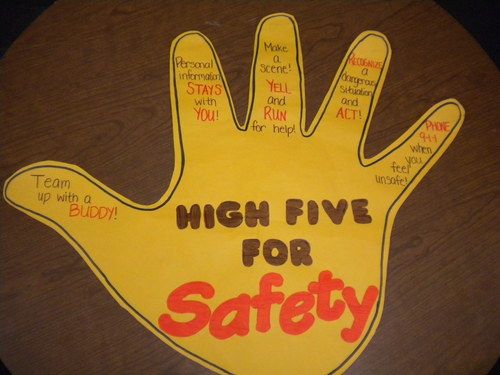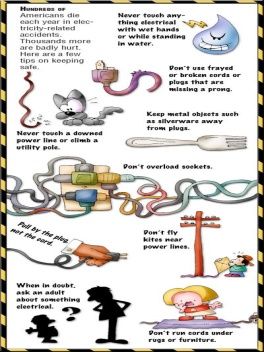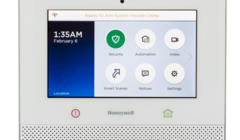
How can I teach my child to be safe at home
As parents, our top priority is always the safety and well-being of our children. One of the most important aspects of parenting is teaching our children how to stay safe, especially within the comfort of their own home.
Home is where children spend a significant amount of time and it is crucial for parents to take necessary precautions to ensure their child’s safety. By teaching children about home safety, we can empower them with the knowledge and awareness to identify potential hazards and prevent accidents.
Education plays a vital role in promoting home safety for children. It is important to teach them about fire safety, electrical hazards, the importance of not opening the door for strangers, and how to handle emergencies. By instilling these skills and knowledge, children develop a strong foundation for staying safe within their home environment.
Parents can also create a safe home environment by implementing safety measures such as installing child-proof locks on cabinets and drawers, covering electrical outlets, and securing heavy furniture to prevent tipping accidents. By taking these preventive measures, parents can minimize potential hazards and create a safe space for their children.
Importance of Home Safety Education
Ensuring the safety of children in the home is a top priority for parents. By taking necessary precautions, parents can create a secure environment for their children to grow and learn. Home safety education plays a crucial role in providing the necessary awareness and knowledge to parents about potential hazards and ways to prevent accidents.
Teaching children about home safety not only makes them aware of potential dangers but also empowers them to take necessary measures to keep themselves and others safe. By providing age-appropriate education on topics such as fire safety, electrical safety, and water safety, parents can instill safe habits and practices in their children.
Home safety education also helps parents identify potential security risks in their homes. By conducting safety assessments and implementing necessary measures, parents can ensure that their homes are equipped with the right safety devices and systems. This not only protects children but also provides peace of mind to parents knowing that their homes are secure.
Furthermore, home safety education enables parents to develop effective parenting strategies. By teaching children about potential hazards and the importance of following safety rules, parents can establish clear boundaries and expectations. This helps children understand the importance of responsible behavior and makes them more likely to adhere to safety guidelines in and outside the home.
In conclusion, home safety education is of utmost importance for parents. By teaching children about potential hazards and ways to prevent accidents, parents can create a safe and secure environment for their children to thrive. So, it is essential for parents to prioritize home safety education and equip themselves with the necessary knowledge to ensure the well-being of their children.
Creating a Safe Environment
When it comes to home safety, creating a safe environment is crucial. Parents should prioritize and take necessary precautions to ensure their child’s well-being. Here are some tips and strategies to help you create a safe and secure home:
- Create awareness: It is important to educate yourself about potential hazards and dangers within your home. Understand common safety risks and how to minimize them.
- Childproofing: Take the necessary steps to childproof your home by putting safety covers on electrical outlets, installing safety gates, securing furniture and appliances, and using window guards.
- Teach safety rules: Educate your child on basic safety rules such as not opening the door to strangers, not touching electrical outlets, wearing seat belts in the car, and using safety equipment like helmets and knee pads.
- Fire safety: Install smoke detectors on every level of your home and teach your child about fire safety. Show them how to stop, drop, and roll in case their clothes catch fire and have a fire escape plan in place.
- Bathroom safety: Always supervise young children in the bathroom to prevent accidents. Keep medicines, cleaning products, and other hazardous materials out of reach. Use nonslip mats in the bathtub and teach your child to avoid running near wet surfaces.
- Kitchen safety: Keep sharp objects, hot liquids, and appliances out of reach. Teach your child to stay away from the stove when cooking and always supervise them in the kitchen.
- Internet safety: Teach your child about the importance of internet safety, including not sharing personal information, avoiding strangers online, and being cautious when clicking on links or downloading files.
- Emergency contacts: Make sure your child knows important phone numbers, such as those for emergency services and trusted adults, and teach them how to call for help in case of an emergency.
By taking these precautions and providing proper education, parents can create a safe environment for their child at home. Remember, safety is a vital aspect of parenting, and it is important to address potential risks to ensure your child’s well-being.
Fire Safety Measures
Teaching children about fire safety is of utmost importance for their security and well-being. By taking necessary precautions and instilling fire safety awareness, parents play a crucial role in keeping their children safe at home.
Here are some essential fire safety measures parents can teach their children:
- Install smoke detectors: Make sure smoke detectors are installed on every level of your home, including bedrooms. Teach your child the sound of the alarm and what to do if they hear it.
- Create a fire escape plan: Teach your child how to create and practice a fire escape plan. Show them the different ways to exit each room and where to meet outside the house in case of a fire.
- Practice stop, drop, and roll: Teach your child that if their clothes catch fire, they should stop, drop to the ground, cover their face with their hands, and roll back and forth to extinguish the flames.
- Keep matches and lighters out of reach: Teach your child the importance of not playing with matches or lighters and to notify an adult if they find any.
- Teach proper cooking safety: Keep your child away from the stove and teach them that they should never touch it or handle hot objects without adult supervision.
- Develop safe habits: Teach your child to always blow out candles before leaving a room, never leave cooking unattended, and never overload electrical sockets.
- Identify safe meeting places: Teach your child to identify safe meeting places outside the home, such as a neighbor’s house or a specific spot on the street, where they can go in case of a fire.
- Regularly check fire extinguishers: Show your child where the fire extinguishers are located in your home and explain how to use them. Regularly check the extinguisher’s expiration date and replace if necessary.
- Discuss the importance of calling 911: Ensure your child knows how to call emergency services and when to do so in case of a fire.
By teaching these fire safety measures, parents can empower their children to be proactive and adequately respond to fire emergencies, ensuring their safety at home.
Electrical Safety Precautions
When it comes to keeping your child safe at home, one important aspect to focus on is electrical safety. Teaching your child about electrical dangers and how to avoid them is essential for their overall well-being. Here are some electrical safety precautions you can take as a parent:
- HOME AWARENESS: Taking the time to assess your home for potential electrical hazards is the first step to creating a safer environment for your child. Look for exposed wires, overloaded outlets, and damaged appliances that may pose a risk.
- PRECAUTIONS: Implementing certain precautions can significantly reduce the chances of electrical accidents. Installing outlet covers, securing cords out of reach, and using child-safety plugs are easy and effective ways to protect your child from electrocution.
- PARENTING EDUCATION: It’s important that parents understand electrical safety themselves in order to effectively teach their child. Research and familiarize yourself with electrical hazards, preventive measures, and emergency protocols in case of an accident.
- TEACH THROUGH EXAMPLE: Children learn by observing, so be sure to set a good example when it comes to electrical safety. Practice safe habits, such as unplugging appliances when not in use, and explain the reasons behind these actions to your child.
- CHILD-FRIENDLY SECURITY: Consider installing tamper-resistant outlets and using cord shorteners or cord organizers to keep electrical cords out of your child’s reach. These security measures can greatly minimize the risk of electrical accidents.
By taking these electrical safety precautions, you can create a safer home environment for your child. Remember, educating your child about electrical hazards and teaching them how to stay safe is an ongoing process. Regularly reinforce these safety measures and promote awareness to ensure the well-being of your child.
Preventing Accidents in the Kitchen
The kitchen is an important part of the home where families gather to prepare meals and spend time together. In order to ensure a safe environment for children, it is essential for parents to educate them about kitchen safety. By taking proper precautions and raising awareness, accidents can be prevented.
One of the first steps towards a safe kitchen is child-proofing the area. Place safety locks on cabinets and drawers that contain dangerous items such as knives, cleaning supplies, and small appliances. Keep these items out of reach or locked away to minimize the risk of accidents.
When cooking with children, always supervise their activities. Teach them about the potential hazards of hot surfaces, open flames, and boiling liquids. Encourage them to stay at a safe distance and never leave them unattended. By teaching children the importance of caution in the kitchen, they can develop responsible habits and avoid unnecessary accidents.
Another key aspect of kitchen safety is teaching children to be aware of their surroundings. They should be mindful of any loose cords from electrical appliances, sharp edges on counters and utensils, and hot surfaces. By instilling this awareness, children can prevent accidental injuries and limit their exposure to potential hazards.
It is also important for parents to lead by example. Practice safe habits such as using oven mitts when handling hot dishes, turning pot handles inward to avoid spills, and properly storing and disposing of food to prevent contamination. By demonstrating these behaviors, children will learn the importance of following safety measures in the kitchen.
Overall, preventing accidents in the kitchen requires a combination of home education and responsible parenting. By taking the necessary precautions and promoting awareness, parents can create a safe and secure environment for their children. This will not only protect them from immediate dangers, but also teach them valuable life skills that will benefit them in the future.
Bathroom Safety Tips
Ensuring a safe bathroom environment is essential for your child’s security at home. Here are some simple precautions parents can take to teach their children about bathroom safety:
1. Supervise your child: Always keep an eye on your child while they are in the bathroom, especially if they are young or just learning about proper hygiene.
2. Lock away dangerous items: Store cleaning products, medicines, and other hazardous substances out of reach and locked away, so your child cannot accidentally ingest them.
3. Use non-slip bath mats: Place non-slip bath mats inside the bathtub and near the sink to prevent your child from slipping on wet surfaces.
4. Set the water temperature: Adjust the water heater in your home to a safe temperature to prevent scalding. It is best to keep it at 120 degrees Fahrenheit or below.
5. Teach proper handwashing: Educate your child about the importance of washing their hands before and after using the bathroom to prevent the spread of germs.
6. Install childproof locks: Use childproof locks on drawers and cabinets to keep curious children from accessing hazardous items or substances.
7. Teach toilet safety: Teach your child to close the toilet lid after each use to prevent them from accidentally falling in. Also, remind them not to play with the toilet paper or flush excessive amounts.
8. Teach emergency procedures: Show your child how to unlock the bathroom door from both the inside and outside in case they accidentally lock themselves in.
9. Keep electrical appliances away: Ensure that hairdryers, curling irons, and other electrical appliances are kept away from water sources to prevent electrical shocks.
10. Teach respect for privacy: Teach your child to respect others’ privacy when using the bathroom, whether it is in your home or in public places.
By following these tips and strategies, you can create a safe and secure bathroom environment for your child, ensuring their well-being and promoting their education on home safety.
Ensuring Child-friendly Furniture
When it comes to child safety at home, one aspect that parents often overlook is the furniture in the house. Ensuring child-friendly furniture is an essential part of creating a safe environment for your children.
Teaching children about the importance of safe furniture can go a long way in preventing accidents. As a parent, it is your responsibility to educate your child about potential hazards and how to avoid them. This includes teaching them about the dangers of climbing on furniture, playing near sharp edges, or using furniture as a playground.
Parenting experts emphasize the significance of child-proofing furniture to enhance the security of your child. You can achieve this through various measures, such as installing corner guards on sharp edges, using furniture straps to secure heavy items like dressers and bookshelves to the wall, and avoiding furniture with small parts that could pose a choking hazard.
Another crucial aspect of ensuring child-friendly furniture is raising awareness about precautions. Encouraging your child to maintain proper posture, sit properly on chairs, and avoid standing on tables or chairs can significantly reduce the risk of accidents.
Additionally, providing your child with an education about furniture safety can help them develop good habits at an early age. By explaining to them the importance of not jumping on beds or sofas and not leaning chairs on two legs, you can instill a sense of responsibility and awareness in them.
Remember, creating a safe environment for your child starts with providing safe and child-friendly furniture. By following these tips and strategies, you can minimize the risks associated with furniture-related accidents and ensure the well-being of your child.
Childproofing Hazardous Areas
When it comes to home safety, taking precautions to childproof hazardous areas is essential. Teaching children awareness and the importance of security can help create a safe environment at home. Here are some tips for childproofing hazardous areas:

- Identify potential hazards in your home, such as stairs, electrical outlets, sharp objects, and cleaning supplies.
- Secure stairways with gates to prevent falls. Make sure the gates are properly installed and cannot be easily dislodged.
- Cover electrical outlets with safety plugs or outlet covers to prevent children from inserting objects into them.
- Store sharp objects, such as knives and scissors, out of reach or in locked drawers or cabinets.
- Keep cleaning supplies and other chemicals in locked cabinets or on high shelves, away from children’s reach.
- Secure heavy furniture, such as bookshelves, to the wall to prevent tipping.
- Ensure that windows have proper window guards or safety locks to prevent falls.
- Teach children not to play near appliances, such as stoves, ovens, and hot water faucets.
- Install smoke detectors and carbon monoxide detectors in appropriate areas of your home and regularly check their batteries.
- Create a child-friendly environment by removing small objects that can pose a choking hazard.
By implementing these childproofing strategies and providing your child with education on home safety, you can help minimize potential risks and create a secure living space for your family.
Teaching Children Emergency Numbers
When it comes to home safety, it is important to take precautions and educate children on how to stay safe. Teaching children about emergency numbers is an essential part of their security education. By teaching them the appropriate numbers to call in case of emergencies, parents can empower their children to take appropriate action to protect their well-being.
1. Teach your child the emergency number for their country. In most countries, the emergency number is 911. Make sure your child knows this number by heart and understands that it should only be called in cases of true emergencies.
2. Discuss different emergency scenarios with your child to increase their awareness. For example, talk about situations where they might need to call emergency services, such as a fire in the home or a medical emergency. Reinforce the importance of staying calm and providing accurate information to the operator.
3. Create a visual aid to help your child remember the emergency numbers. This can be a poster or a small card that they can keep in their room or by the phone. Include the emergency number and a brief description of when it should be called.
4. Practice role-playing scenarios where your child pretends to call emergency services. This can help them become more familiar with the process and build their confidence in case they ever need to make a real emergency call.
5. Remind your child that calling emergency services is important, but they should only do so when necessary. Explain that prank calls or calling for non-emergency situations can hinder the efforts of first responders and waste resources.
By teaching your child about emergency numbers, you are equipping them with the knowledge and skills they need to keep themselves and others safe. Make sure to regularly review and reinforce this information to ensure they are prepared to handle emergencies confidently.
Stranger Danger Awareness
Ensuring that your child is aware of the dangers posed by strangers is an important aspect of home safety education. By teaching your child about stranger danger, you are empowering them to make wise decisions when they encounter potential threats outside of the home.
Here are some tips and strategies to help you educate your child about stranger danger:
- Start by explaining the concept of strangers to your child. Teach them that a stranger is someone they do not know and haven’t been introduced to by a trusted adult.
- Explain to your child that not all strangers are dangerous, but it’s important to be cautious and take precautions when dealing with unknown individuals.
- Teach your child to never go anywhere with a stranger, even if they offer something enticing like candy or a pet. Encourage them to come home or find a trusted adult to handle the situation.
- Role-play different scenarios with your child to help them practice how to respond to strangers. Teach them to say “no” firmly and loudly, and to run away to a safe place if necessary.
- Encourage your child to always stay in well-lit and public areas when they are out and about. Remind them to never go into someone’s home or car without first consulting with a trusted adult.
- Establish a secret code word or phrase that your child can use to verify if someone claiming to be sent by you is actually trustworthy.
- Teach your child the importance of trusting their instincts. If they feel uncomfortable or scared around someone, it’s crucial to listen to those feelings and remove themselves from the situation.
- Regularly reinforce the message of stranger danger with your child. By incorporating it into your everyday conversations, you can reinforce their awareness and preparedness.
By teaching your child about stranger danger and encouraging them to take necessary precautions, you can help them feel safe and empowered in various situations outside of the home.
Online Safety for Children
In today’s digital age, it’s important for parents to take precautions to ensure the online safety of their children. With the increasing use of technology, children are more exposed to potential online dangers than ever before.
As a parent, it is your responsibility to teach your child about online safety and provide guidance on how to navigate the online world in a safe manner. By promoting awareness and educating your child about potential risks, you can help them develop the skills necessary to stay safe online.
One of the most important aspects of online safety is teaching your child about the importance of personal information protection. Teach them to never share personal information, such as their full name, address, phone number, or school details, with strangers online.
Encourage open communication with your child and let them know that they can always come to you if they come across something that makes them uncomfortable or if they have any questions about online safety. Establishing this sense of trust will help them feel safe and secure knowing that you are there to support them.
Another important aspect of online safety is teaching your child about the importance of safe internet practices. Teach them to use strong and unique passwords for all their online accounts, and to never click on suspicious links or download files from unknown sources.
It’s also important to set boundaries and establish rules for internet usage. Limit their screen time and encourage them to engage in other activities such as reading or playing outdoors. Supervise their online activities and consider using parental control software to filter inappropriate content.
Lastly, ongoing education is key. Stay up-to-date with the latest online safety techniques and technology trends, and share that knowledge with your child. Encourage them to attend workshops or seminars on online safety, and make sure they understand the potential risks associated with social media platforms.
By taking these precautions and actively parenting your child’s online activities, you can help create a safe and secure digital environment for them.
Teaching Road Safety
Road safety education is crucial for every child’s safety and well-being. As a parent, it is essential to take necessary precautions to ensure your child’s safety on the road. Teaching road safety at home plays a vital role in raising responsible and cautious individuals.
Start by setting a good example for your child. Always follow traffic rules, wear seat belts, and use pedestrian crossings when necessary. By demonstrating safe practices, you teach your child the importance of following traffic guidelines and being responsible on the road.
Teach your child about the different traffic signs and their meanings. Explain what each sign indicates and how to respond accordingly. This knowledge will enable them to make safe decisions while crossing roads or walking in the neighborhood.
Another important aspect of road safety education is teaching your child how to be cautious around moving vehicles. Teach them the importance of staying on the sidewalk, looking both ways before crossing the street, and making eye contact with drivers to ensure they are seen.
Furthermore, emphasize the significance of wearing reflective clothing when it is dark outside and encourage your child to use hand signals while biking or rollerblading on the road. By doing so, they enhance their visibility and reduce the risk of accidents.
Home security can also play a crucial role in teaching road safety. Make sure your child understands the importance of keeping gates closed and not running onto the road without supervision. Reinforce the idea that playing near or on the road is dangerous and should be avoided at all times.
Overall, teaching road safety is an essential part of parenting. By providing your child with the necessary education and precautions, you empower them to make safe decisions and protect themselves on the road. Instilling these lessons at home ensures that your child becomes a responsible and aware individual when it comes to road security.
Regular Safety Discussions with Children
Teaching children about home safety is an essential part of parenting and education. Regular safety discussions with children can help increase their awareness and promote a culture of safety in their daily lives.
Parents should start these conversations early and continue them frequently as their children grow. By discussing safety precautions at home, parents can teach their children about potential hazards and how to mitigate them.
During these discussions, it is important to emphasize the importance of following rules and guidelines set by parents. Children should be encouraged to ask questions and express any concerns they may have regarding their safety at home.
Parents can use various strategies to make these discussions engaging and interactive. They can incorporate games, storytelling, and role-playing to teach important safety concepts. For example, parents can create scenarios where the child has to identify potential hazards, or they can act out emergency situations and teach the child how to react.
Parents should also emphasize the importance of physical security measures, such as locking doors and windows, using security systems, and being cautious when answering the door. Teach children about the role of alarms, smoke detectors, and fire extinguishers, and how to use them in case of emergencies.
By having regular safety discussions with their children, parents can instill a sense of responsibility and awareness in their child, ultimately creating a safer home environment.
Q&A:
What are some tips for teaching home safety to children?
Some tips for teaching home safety to children include creating a fire escape plan, teaching them how to use emergency phone numbers, explaining the dangers of household chemicals, and discussing the importance of not opening the door to strangers.
How can parents create a fire escape plan with their children?
Parents can create a fire escape plan with their children by mapping out exit routes in the house, practicing crawling low to avoid smoke, designating a meeting place outside, and teaching children how to call 911 in case of a fire.
Why is it important to teach children how to use emergency phone numbers?
Teaching children how to use emergency phone numbers is important because it allows them to call for help in case of an emergency or dangerous situation. This knowledge can potentially save lives and ensure that children can reach authorities quickly when needed.
What should parents do to prevent accidents with household chemicals?
To prevent accidents with household chemicals, parents should keep them out of reach and sight of children, use childproof locks on cabinets, use products with child-resistant packaging, and teach children about the potential dangers and consequences of handling these substances.
How can parents teach children to be cautious when opening the door to strangers?
Parents can teach children to be cautious when opening the door to strangers by instructing them to never open the door for someone they don’t know, to always ask for identification before allowing someone in, and to communicate with a trusted adult if they are unsure or uncomfortable about the situation.
What are some tips for teaching children about home safety?
Some tips for teaching children about home safety include: setting clear rules and expectations, creating a safe environment, teaching children emergency procedures, and regularly discussing safety topics with them.






